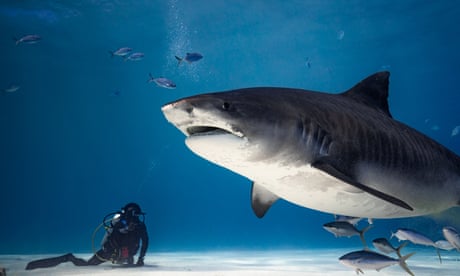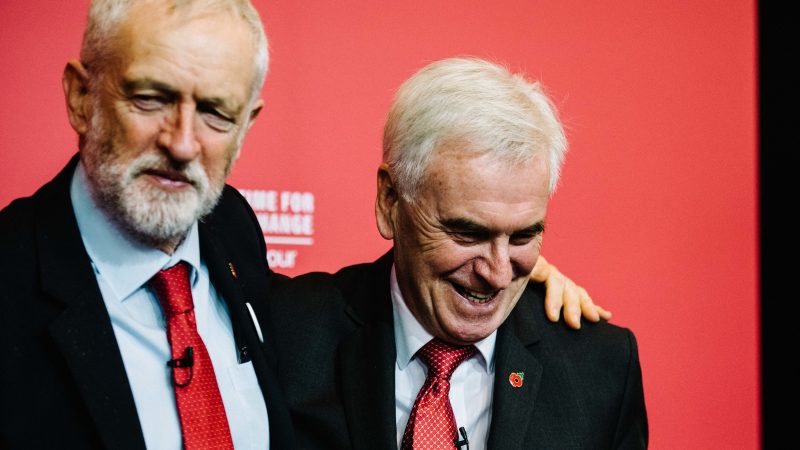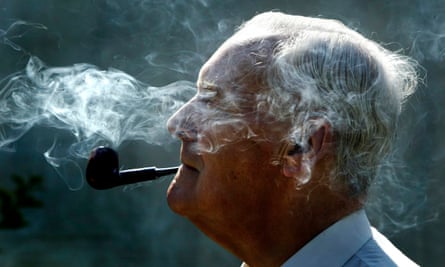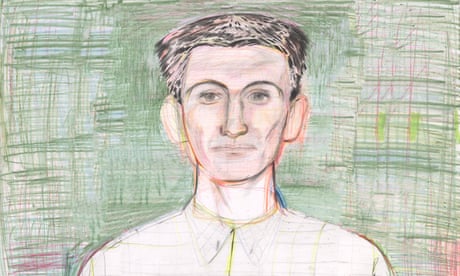Margaret Atwood
Interview
‘I can say things other people are afraid to’: Margaret Atwood on censorship, literary feuds and Trump
At 84, The Handmaid’s Tale author is as outspoken as ever. She talks about aging, culture wars - and why “the orange guy” can’t be allowed back into the White House
Lisa Allardice
Sat 4 May 2024
“I’m the great sage on top of the mountain,” Margaret Atwood says with a smile, on a video call from her home in Toronto. “If you’ve lived to a certain age people think you know something because they haven’t got there yet.”
At 84, most writers could be forgiven for taking it easy, but especially Atwood, after a tumultuous few years that have seen The Handmaid’s Tale become a hit TV series; the publication of its long-awaited sequel The Testaments, joint winner of the Booker prize in 2019; and the death of her partner of nearly 50 years, novelist Graeme Gibson. He died of a stroke two days after the UK launch of the novel, and Atwood, with typical grit, carried on with the tour.
Since turning 80 she has published a book of poems, Dearly, many in memory of Gibson; a doorstopper volume of nonfiction, Burning Questions; and a collection of short stories, Old Babes in the Wood – maintaining her average of writing a book a year for more than 60 years. Not to mention a steady flow of articles and an energetic Substack. These days she can hardly go out in public without requests for selfies. “The most perilous location is the women’s washroom,” she confides.
At the end of last year, Atwood had a new pacemaker fitted, a procedure she tap danced through, posting a video of herself doing a post-op routine to Singin’ in the Rain in a hospital gown. Her heart condition is progressive – “Now there’s a cute use of the word ‘progressive’ for ya!” she writes on her Substack – but under control with medication. Her main worry now is turning a “not very attractive shade of blue” if she goes in the sunlight, due to the drugs; factor 50 is essential at all times.
The perils of old age form the background to her latest publication, a standalone story, Cut & Thirst. “Don’t say ‘old’, it’s ‘older’,” one of three friends insists, as they meet to plot the murders of nine “has-been” male writers, as revenge for sabotaging the reputation of a female novelist many years ago. The story is as sharp and sparkling as the G&Ts the ladies knock back. “This is a cosy crime that doesn’t come off,” Atwood chortles of her take on the Richard Osman geriatric crime genre.
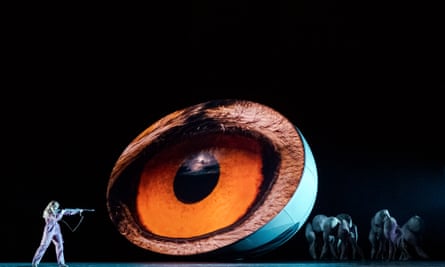
Her “three harmless older ladies with PhDs” plot against a cabal of bookish bullies, in particular “The Humph”: “Humphrey had come from England. Where else? … His Englishness was thought by him to confer a superpower in matters literary, a view once shared by many others; though it surely is shared no longer, Myrna reflects with satisfaction.” Ouch!
Tantalisingly, this literary feud is apparently based on real events. “How could it not be?” she twinkles mischievously. “In the age of Martin Amis, that kind of thing went on quite a lot.” But it’s not about Amis and friends (Julian Barnes, Ian McEwan et al) back in their swaggery heyday, she insists. “It’s one of those situations in which you know who you are,” is all she will say.
In the story the “has-beens” avoid being killed off completely – a complicated plan involving brownies laced with laxatives backfires. “People have done that,” she says, raising one of her owlish eyebrows even higher. “We will be hearing from old white guys again,” she predicts, with a smile. “We went through a number of years in which people were saying ‘Oh, old white guys, boring, boring, boring’,” she drawls. “But now they can write about being old white guys in this climate, which is quite different from being old white guys 20 years ago.”
Atwood likes to take the long view, pointing out that “literary feuds are a long-standing thing. Ever since Roman times they were slanging epigraphs about each other around.” Though the fallout from such spats is far more toxic than in the days of poison pen letters in literary magazines. “I think we are getting through that phase of behaviour,” Atwood muses on what she calls “modern-day guillotining” via social media, predicting that the heat will eventually die out of the current culture wars. “These things get too extreme, and middle-of-the-road people turn against them.”
We have met the “gaggle of hags” in Cut & Thirst in an earlier story, Airborne. All three are retired academics – “What sort of panel?” one asks of a recent radio appearance. “Chrissy drops her voice. ‘Gender.’ ‘Fuck,’ says Leonie. ‘Snake pit!’” She has great fun with her sweary bluestockings who balk at the use of “totally” as a modifier and are triggered by trigger warnings.
Leonie’s speciality is the French Revolution. Atwood has been reading a lot about the French Revvie, as Leonie calls it, lately. “It was like a snowball beginning to roll down the hill, and then it gets bigger and bigger. At any point people could have made decisions that would have turned it the other way,” she says. “It was the template for a lot of later revolutions, both on the left and on the right, and I would count [Trump’s] Maga movement among those.”
A lot could happen between now and the US election. Either one of these people could just fall over
In an article for this paper following the attack on Salman Rushdie in August 2022, Atwood wrote that American democracy is under threat like never before. “It is definitely under threat,” she says now, though she’s reluctant to predict the election result. “A lot of things can happen between now and then. Either one of these people could just fall over,” she warns. But she is very clear on what the outcome will mean: “You have a choice between somebody who without a doubt, and has said so, will impose a vengeful tyranny, and another person who wouldn’t,” she says. “You get dictatorships when times are bad and chaotic, because people are willing to trade in their democratic rights for somebody who says they can fix it. That is usually a lie. But that’s how you get there.”
Questions of freedom of expression are “front and centre” right now, she believes, with both left and right turning to censorship. “‘You have to take this book out of the school because it hurts my child’s feelings,’ says one hand, and the other hand says ‘Well this other book hurts my child’s feelings, so you have to take it out.’ And that goes on until there aren’t any books left. If you go too far down the road in either direction, you shut down political speech.” While she doesn’t think this is likely to happen in Britain any time soon – “the British are quite mouthy, you may have noticed” – it is happening in parts of America.
When Atwood speaks the world listens, with good reason: the financial crash, the rise of the extreme right and the infringement of women’s freedoms in recent years have all been anticipated in her work. “I just pay attention,” she likes to say. Her status as an international treasure and seer means she is frequently sought out for her opinions on the hottest issues of the day, as well as panel discussions and events.
“I’m a kind of walking opinion poll,” she says. “I can tell by the questions that people ask me what’s on their minds. What is the thing they’re obsessing about at the moment.” The backwards turn of women’s rights, with the ruling just this month that the 1864 total ban on abortion be enforced in Arizona, for example, is high on the list. But as always she is careful to stress that there is no one answer to questions about the future for women. “I have to ask which women? How old? What country? There are many different variations of women.”

She attributes her outspokenness to the fact that she doesn’t have a job: “You can say things that other people might be afraid to because they will lose their job or get cancelled.” In the wake of the #MeToo movement, for example, she was accused of being “a Bad Feminist” for demanding a fair hearing for a Canadian creative writing lecturer who had been sacked for sexual harassment – the tag didn’t stick.
Once again we are back to the French Revolution, and a group known as the “toads of the Marsh”, the moderates in the French House of Commons. “The toads were usually quite silent, but they did hold the balance of power,” she explains. Be they in 18th-century France or the swamp of modern American politics, the toads are always courted by those on the extremes to win their votes. “So it’s not all bad being a silent person in the middle,” she says. “I’m not one because I’m not silent. But I do feel that my position on these things is usually more towards the middle than anywhere else.”
In short, she is rigorously even-handed about everything (“the orange guy” aside). “Annoying, isn’t it,” she agrees. But it didn’t always save the toads from getting their heads cut off. “All that means is that you get attacked by both sides.”
Whereas once she used to be asked why she hates men, now everyone wants to know “Is there hope?” Typically she answers this question not by consulting her crystal ball, but by looking to the past: every generation has a tendency to think they are living through the end times, she argues as someone born on the brink of the second world war, and who had just published her first book at the time of the Cuban missile crisis. Hope itself is “a come with”, she says. “It comes with being human. It comes with the grammar that we have devised, which allows us to talk about the future, which doesn’t exist yet. It’s a construct of the imagination.”
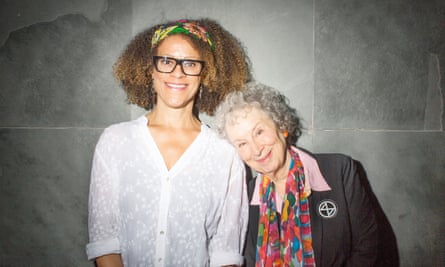
When she was 18, she wrote a story about an elderly woman, who “was dusty and used up and without hope and covered with cobwebs,” she says. “And that person was 40.” Now, nearly halfway through her ninth decade, there are no cobwebs on Atwood. At one point in our chat, she leaps up to show off her orange orthopaedic chair (“Look after your back!” is her number one tip for writers), lifting it to camera height in a way that would do for lesser mortals.
Every so often she pops up to leave her study (an orderly clutter of books and photographs), returning with a book she wants to recommend: one about utopian experiments, “an intimate” history of pockets and a book by an expert on violent behaviour – this evening she is attending a fundraiser for a Canadian organisation called Shelter Movers, which helps victims of domestic violence.
Like the older ladies in Cut & Thirst, when she meets up with her friends there is a routine health check. The “Organ Recital”, as they call it: a stroke; a bad fall; cracked vertebra from going over a speed bump too fast. “Do you know what a strangulated femoral artery hernia is?” she fires off at one point, the most recent drama to befall one of her circle. “The list goes on,” she says cheerily.
For Atwood herself, “nothing has changed. I’m very busily at work.” She’s just back from a couple of months writing in San Miguel, Mexico – “it’s quite slippery in Toronto in February and March” – where she also had a steady stream of house guests, on the condition that they did all the cooking.
After years of insisting that she would never write a memoir, she is finally doing just that. “They ganged up on me,” she says of her editor and agents. “I got talked into it.” So far she’s having lots of fun: “I’m an inherently frivolous person and what you can usually remember is stupid things that happened,” she says. “I haven’t got to the sad parts yet. Everybody is still alive.”
Pay attention, she tells me sternly. “I’m from a different generation. We don’t do grief in public.” Writing of her decision to carry on with the UK tour for The Testaments after Gibson’s death, she asks: “Given a choice between hotel rooms and events and people on the one hand, and an empty house and a vacant chair on the other, which would you have chosen, Dear Reader?” The empty house and vacant chair came her way later, she writes, “as such things do”.
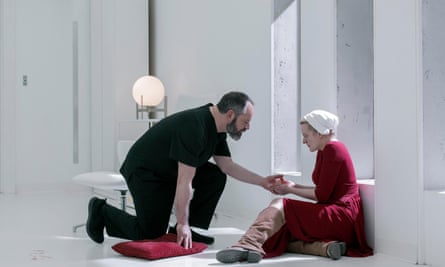
But she does do grief on the page. The elegiac Nell and Tig stories about a long-married couple that frame her most recent collection, Old Babes in the Wood, are tender dispatches from the empty house, where Nell lives “like a student again” after Tig’s death: “the same formless anxiety, the same bare-bones meals”. Suffused with sorrow, these stories are among the most personal of Atwood’s writing. “Everything in them is true,” she says. “I loved him dearly,” she writes in the poem Dearly.
Next month she is off on her annual trip to Pelee Island, where she and Gibson would always go birding in May (he founded the Bird Observatory there). She has inherited several of his projects to keep her busy. Then she is off to a literary festival in Dublin, where she is appearing at an event with Mary Robinson, the former – first female – president of Ireland, and American musician Laurie Anderson (Atwood’s a fan). In the autumn she is coming to London for the opening of a ballet of her dystopian MaddAddam trilogy (about a group of survivors after a global pandemic), a smash hit in Toronto in 2022, on which she collaborated with choreographer Wayne McGregor. In yet another instance of alarming Atwoodian prescience, the ballet was due to open at the Royal Opera House in 2020, but was postponed because of Covid. And she will be in the UK in time to launch the publication of a new selection of her poetry.
Still jetting about, I say.
“Still! I love the way people use this word ‘still’!” she shoots back. “My God, is she STILL alive?”
Cut & Thirst by Margaret Atwood is published by Amazon Original Stories.







